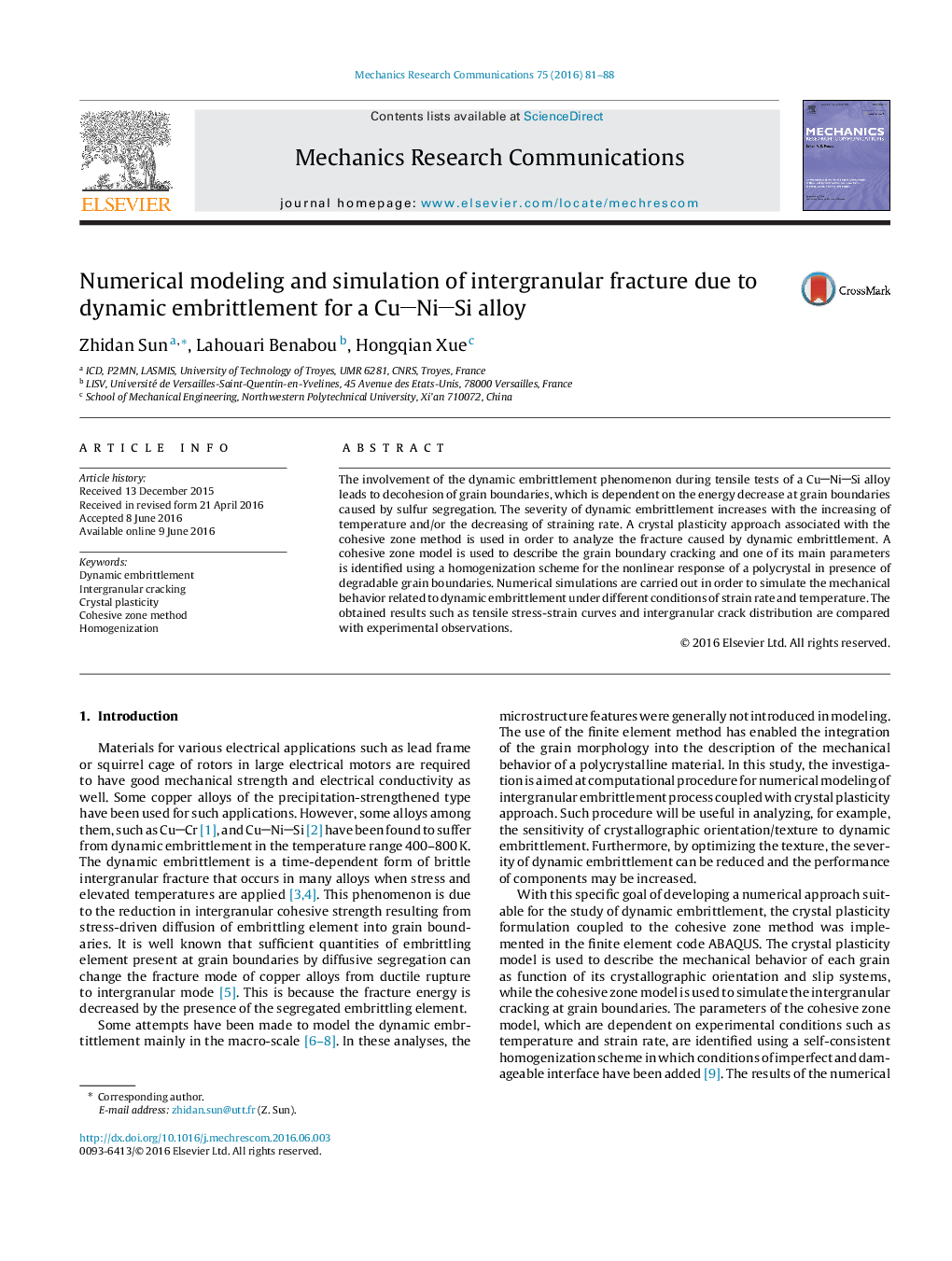| Article ID | Journal | Published Year | Pages | File Type |
|---|---|---|---|---|
| 801097 | Mechanics Research Communications | 2016 | 8 Pages |
•A numerical approach coupling crystal plasticity and cohesive zone method is developed.•Parameters are identified using a homogenization scheme accounting for interfaces.•Simulation results are consistent with experimental curves and observations.•Stress assisted diffusion process should be incorporated in the approach.
The involvement of the dynamic embrittlement phenomenon during tensile tests of a CuNiSi alloy leads to decohesion of grain boundaries, which is dependent on the energy decrease at grain boundaries caused by sulfur segregation. The severity of dynamic embrittlement increases with the increasing of temperature and/or the decreasing of straining rate. A crystal plasticity approach associated with the cohesive zone method is used in order to analyze the fracture caused by dynamic embrittlement. A cohesive zone model is used to describe the grain boundary cracking and one of its main parameters is identified using a homogenization scheme for the nonlinear response of a polycrystal in presence of degradable grain boundaries. Numerical simulations are carried out in order to simulate the mechanical behavior related to dynamic embrittlement under different conditions of strain rate and temperature. The obtained results such as tensile stress-strain curves and intergranular crack distribution are compared with experimental observations.
